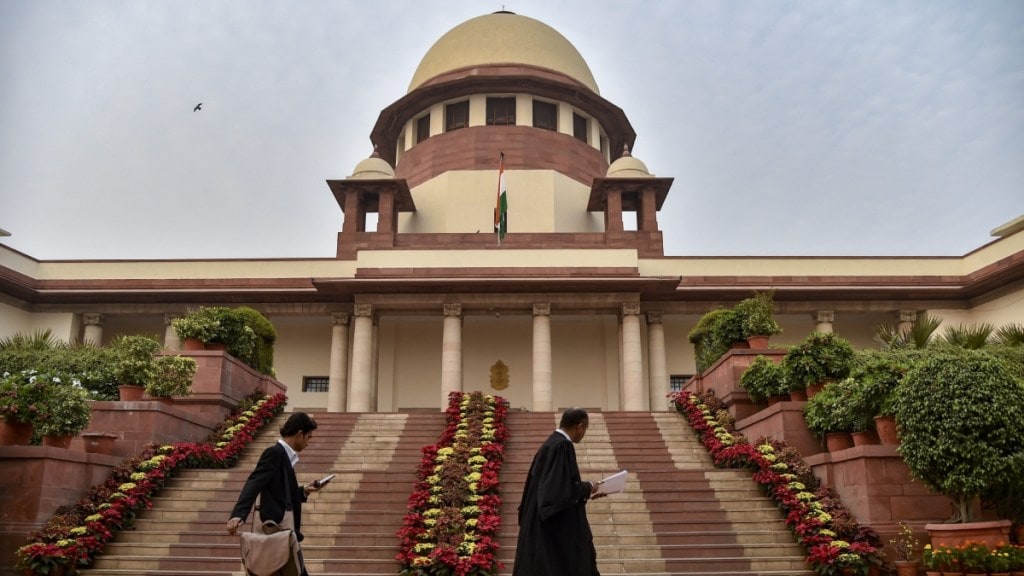Delhi’s date with fireworks on Diwali night seems likely with the Supreme Court observing that a complete ban on firecrackers is “neither practical nor ideal”. Banasree Purkayastha looks at how green crackers can control air pollution & whether a middle ground between festivals and clean air can be found
l What has the SC said?
LAST FRIDAY, THE Supreme Court, while reserving its order on a batch of pleas seeking permission to manufacture and sell green firecrackers in Delhi and the National Capital Region (NCR) said a complete ban on bursting of fire crackers in Delhi-NCR is “neither practical nor ideal” as such restrictions were often violated and balancing of equities is needed. “Despite a complete ban, firecrackers continue to be used. Extreme orders create problems,” Chief Justice B R Gavai said, adding that the court was seeking a balanced solution that safeguarded both environmental and livelihood interests. The observations, which hinted towards relaxation of the ban, were made after the central government along with Delhi and NCR states (Uttar Pradesh, Haryana and Rajasthan) requested it to allow bursting of green firecrackers on occasions like Diwali, Guru Parv and Christmas. Solicitor General Tushar Mehta, appearing for the Centre and the Delhi-NCR states, suggested allowing bursting of firecrackers between 8 pm and 10 pm on Diwali, on Christmas and New Year’s Eve, between 11.45 pm and 12.30 am, and for one hour on Gurpurab.
l What are green firecrackers?
GREEN FIRECRACKERS WERE developed by the Council of Scientific & Industrial Research-National Environmental Engineering Research Institute (CSIR-NEERI) to get around the problem of environment-unfriendly, high-decibel traditional fireworks that spew harmful chemicals into the atmosphere. These do not contain barium which is used in conventional firecrackers to add the green colour and instead use potassium nitrate as an oxidizer, along with lower amounts of other chemicals like aluminum and carbon. This formulation lowers particulate matter emissions by at least 30% and noise pollution, with specific types like the Safe Water Releaser (SWAS) further reducing emissions by releasing water vapour and using water-immbolized materials. These also produce much less noise (100-130 decibels) compared to conventional crackers (160-200 decibels). All green cracker packages are stamped with a green logo and a QR code.
l Stance of the Delhi government
THE BJP, WHICH won the Delhi polls earlier this year, is looking for a middle ground. Chief Minister Rekha Gupta had earlier said the Delhi government would approach the Supreme Court to allow certified green firecrackers for Diwali. “Diwali is a festival of joy. Without fireworks, it feels incomplete. At least green crackers should be permitted in Delhi,” she had said. The previous Aam Aadmi Party government had enforced the ban on firecrackers strictly. In 2023, it had issued a ban on production, sale and use of all firecrackers, including green crackers.
The Diwali festival has been traditionally linked to fireworks but this is also the time of the year when low temperatures, farm fires in neighbouring states coupled with vehicular pollution lead to a poisonous cocktail of gases in the air. The city’s skyline post Diwali would be covered with a thick smog, with citizens choking on pollutants. That led to the Supreme Court imposing a ban on firecrackers in Delhi-NCR in 2014-15. In 2018, green crackers, too, came under the ban.
l Has the blanket ban worked?
ON FRIDAY, THE SC bench asked the government counsel as to whether the ban has resulted in any tangible difference or led to decrease in the air quality index (AQI), an indicator of pollution level. The solicitor general replied that according to data of the Commission for Air Quality Management (CAQM), pollution levels had remained “more or less the same”, except during the Covid-19 lockdown period when industrial and vehicular activity was halted. Despite a complete ban, firecrackers continue to be used. Enforcement is difficult, and crackers can be smuggled into the city from other states. Earlier this month, the Delhi Police had seized over 4,600 kg of illegal firecrackers in multiple raids. Many neighbourhoods in the city continue to record AQI levels exceeding 400 (on a scale of 500) days after Diwali even now. Neighbouring cities such as Noida, Ghaziabad and Gurgaon and even far-off Bharatpur and Sriganganagar in Rajasthan have recorded 300-plus AQI in the days following Diwali last year.
l Impact on manufacturers
FIRECRACKER MAKERS HAVE been pleading for a decision before Diwali – October 21 this year. Last month, the apex court had permitted manufacturers with valid certificates from NEERI and PESO to produce green crackers. It had then said the makers must ensure that these crackers are not sold in Delhi-NCR. Around 50 companies make green crackers in Delhi-NCR, as per the Fireworks Manufacturers Association (North India). Delhi and NCR states have proposed that green firecracker makers be required to submit product-specific QR codes to PESO and state pollution control boards, maintain records of production and sales. PESO and NEERI would conduct surprise inspections at manufacturing sites, storage facilities, and retail outlets. The states suggested that sales be allowed only through licensed traders, and e-commerce platforms be barred from processing online orders in Delhi-NCR.


